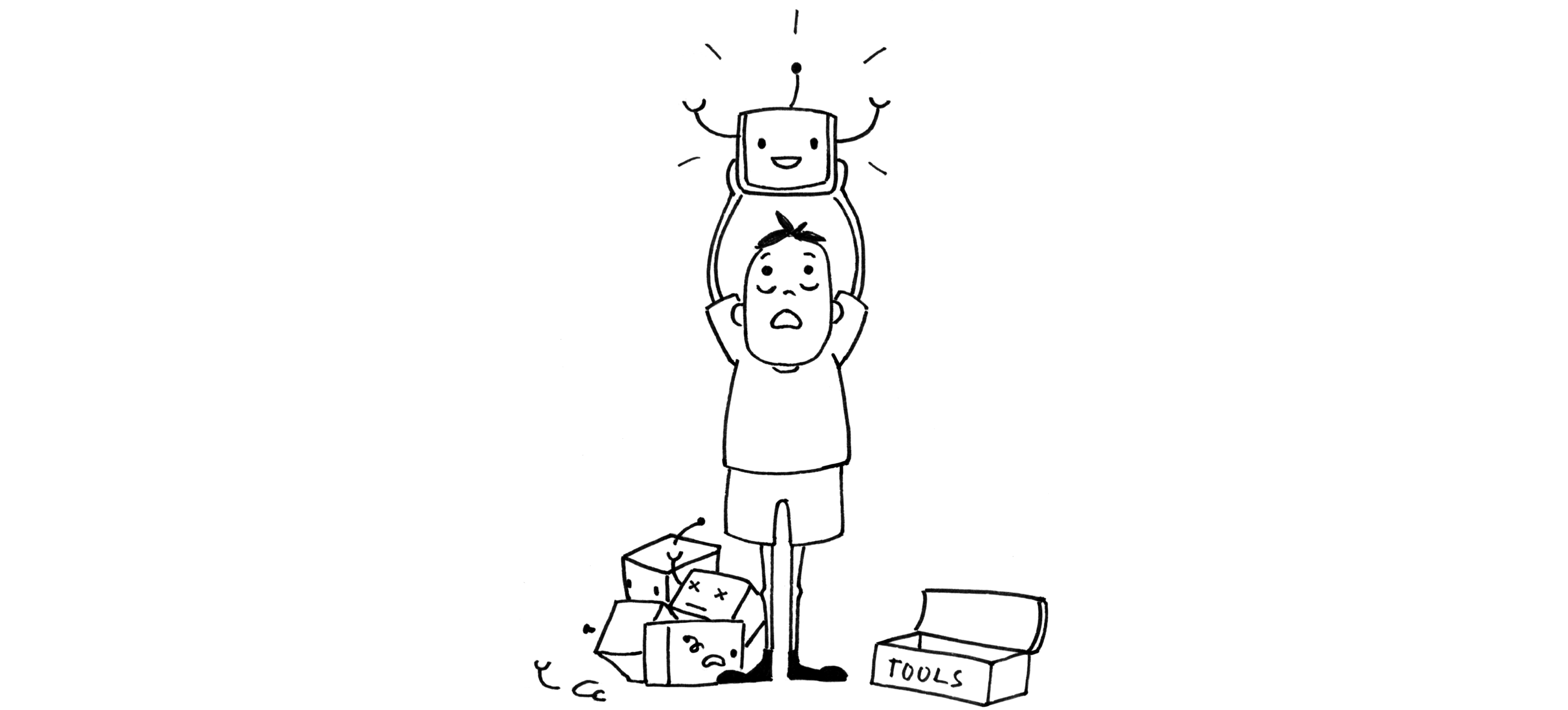Embarking on a journey of iterative research and customer engagement doesn’t have to be an exhausting, drawn-out endeavor.
Imagine a voyage through the Helio universe, where discovering target audiences on distant planets is a thrilling adventure, not a burdensome task.
In the words of a wise sage, there are always two essential elements: A product and its customer. One cannot truly thrive without the other.
ZURB, the catalyst that ignited Helio’s existence, has propelled numerous companies, including Hulu, Mozilla, and Barracuda, to new heights. A recurring lesson stands out: direct communication with customers is crucial. This insight was the genesis of Helio and our adventure into iterative research.
As a product design firm with two decades of experience aiding businesses like Hulu, Mozilla, and Barracuda, we’ve learned the importance of connecting teams with their customers. This belief was so strong that it led to the creation of Helio, a tool designed to facilitate this very connection.
Here are our top 5 tips empowering your crew to learn from their audiences.

1. Eradicate Research Bloat with Iterative Research
Many companies and teams create unnecessary bloat when it comes to learning from customers. After all, “research” is a loaded word. Therefore it must be important
We’ve found that having smaller conversations within teams helps us get closer to our customers.
- Close the gap with your internal team. It’s super awesome when team members and stakeholders invest in your iterative research. More than 70% of our research audience works closely with other team members. First, find out what is essential to your team or what they think customers need. That way you go into your customer conversations with strong hunches that help drive your research.
- Qualitative questions through short surveys. We were surprised that many of our researchers used slower methods, like webinars or even PowerPoint presentations, for their initial research. We’re not saying these methods aren’t valuable; we’re saying these methods take a lot of upfront investment. This is a big reason we developed Helio, see our horror story here. 😱
- Our presentation tips. There are many ways to present findings to your team and, depending on your process, do what works for you. For us, presenting findings along the way is a best practice, especially when working directly with stakeholders. Validating our design decisions as we go and wrapping up all the findings with our final deliverables is a great way to keep your stakeholders invested. A few tools besides Helio that help make that happen are Figma, Notion and G Suite; we love the collaborative space that tools like these provide.

2. Find Your Tribe
Then there’s the “small team” problem. When you’re a team of one (we see you), it can be a challenge to start learning from customers. A lot of the time the struggle isn’t crafting the “perfect” test —in iterative research it’s “Who to ask” and “How to ask it”.
- Find your customers, or what we call an audience. This can be a monumental task, especially if you don’t have an existing group that you access to survey. We suggest partnering with the sales or customer service teams to gain access to an audience. Helio is also a great resource too because we have over 300k participants ready to go. Or cast a wider net by paying for social media ads and manually screening participants, like these user researchers .
- Speak your customers’ language. An overwhelming 90% of researchers agree: avoid using jargon, or overly technical terms to get the best answers (unless that’s the language your customers use). For our testing needs at ZURB, we typically use more conversational language. Something that’s easy to understand.
- Find your customers. Probably more important than the questions you’re asking are the people you’re asking. We’re surprised that our audience of researchers would utilize more expensive tactics, such as targeted Facebook ads or time consuming intensive customer research. For this series, we tapped into our audience of researchers to learn from their experiences. You could imagine that the answers we receive would be far different from our audience of teachers.

3. Keep it Simple
Talking to customers ensures we build better products. One of the hurdles that are sometimes more challenging for teams to leap is what to ask customers.
After going through the process of getting the tools and the support, we can get a little writer’s block when it comes to what to ask. We’ve learned that not worrying about asking the “right” questions helps move things forward.
- Keep situations simple. Testing in smaller sections helps customers collect their thoughts and respond more thoughtfully. Like most user researchers, we’ve found that running several shorter, more concise surveys sets our participants up to provide more thoughtful answers.
- Volume over perfection. Learning from customers requires iterative research. When crafting customer questions, we rarely create a “perfect” question. When we first start, we create 50 hunches before we even craft the questions we want to ask. We love this researchers’ process of creating qualifying tests.
- When in doubt, get feedback. Another set of eyes on any project is always super helpful, we were delighted to learn last week and confirmed this week that so many of our research audience has other team members to bounce ideas off of. After all, finding out if your questions make sense, aren’t leading, and illicit the answers your team expects is always better with a teammate.

4. Test and Iterate
When learning from an audience, seeking out strength in numbers… i.e. “more questions”. And not just the volume of questions to a small group of people but more questions to more people. Iterative research requires a volume of participants and tests.
- Group your tests into themes. Being organized is super important when conducting any research. Even more so when you’re asking a lot of questions to a lot of customers. Like a majority of Researchers tested, we suggest grouping or theming your tests. For example, you’re running tests on your sign up flow. You’ll want to break the test up into specific sections: comprehension questions, usability directives, and emotional gauges. Keeping your tests concise for your customers helps them stay engaged and helps you later when synthesizing the answers you’ve collected.
- Battle bias with more participants. Some are a little more guilty than others of not collecting enough feedback, like the 60% of researchers we surveyed. When making creative decisions, we may only rely on ourselves or the opinions of a single coworker to decide what to do. These ideas may have the best of intentions, but any answer you receive that isn’t from your customer will be biased. Talking to as many customers as possible helps build better product.
- Iterate and create better questions. Thanks to our design roots we know iterative research is the key to learning. After collecting all the answers you may learn that you have more questions! If you do like 25% of researchers, that’s awesome… but test some more. This is how we learn how to craft better questions that lead to better answers.

5. Make Iterative Research Findings Actionable
Making findings actionable is the first step in learning from customers. We turned to our audience of Researchers, Marketers, and Designers about the teams and projects they’re working on.
- Timing is everything. Learning from customers should align with project goals to maximize the impact of your testing. We learned that 76% of our audience works with other teams on projects. You must ensure your testing aligns with your delivery across those teams.
- Make the case for customer feedback. You may be in a similar situation to the 54% of our audience who don’t have a budget for research or are unsure of what that budget may be. What helps here is letting your project leads see the learnings you’ve made from your customers.
- Combine powers. The best way to get buy-in is to partner with other teams within your company. Marketing and Sales departments usually get the lion’s share regarding budgets, and 5iterative research4% of our audience say they are the most likely teams to work with. Finding out those teams’ needs and gaps allows you to invest time and resources more wisely.
Building better products and services should empower you to do iterative research whether you’re a “researcher” or not. We think learning from customers should be a part of every team: Sales, Marketing, Design, and so on.
After all, those departments are the crew of your product starship as it sails through the Helioverse, meeting strange and new customers.



